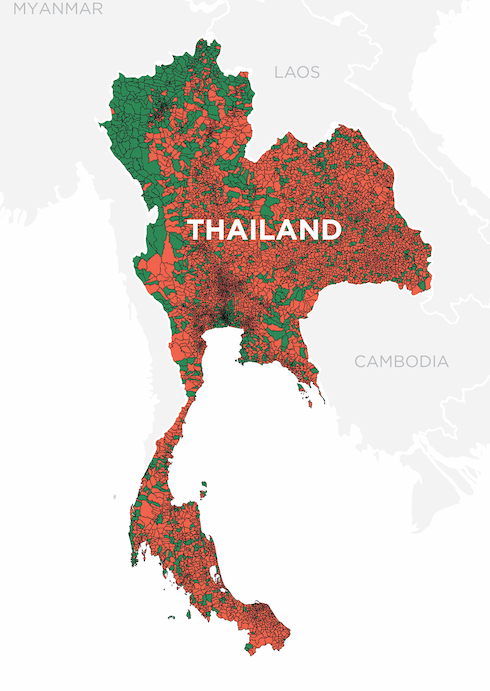Issan People, Most Unreached People in Thailand
Northeast Thailand (Issan) is one of the most unreached areas, where less than 0.2% of the population professes faith in Christ.

Why Thailand?
In Thailand, there is a population of 69.5 million people, among whom only 0.75% are evangelical Christians. Despite being one of the safest and most open countries in Asia, Thailand has the lowest evangelization rate and with 94% of villages having no churches. This means that more than 89% of the Thai people are considered unreached with the gospel, with Buddhism being the dominant religion, embraced by 93% of the population. Northeast Thailand (Issan) is one of the most unreached areas, where less than 0.2% of the population professes faith in Christ.
The prevalence of Buddhism in Thailand promotes benevolent works and emphasizes reason and enlightenment as a means to salvation, denying the existence of a personal God. However, traditional religion and spirit worship have had a negative impact on the spiritual well-being of the Thai people, creating a culture of fear and power.
The task of training Thai men and women to lead in ministries and churches is challenging and time-consuming. Some may face pressure from family members to recant their faith, while others fear societal persecution if they choose to follow Jesus.
Despite these difficulties, we are committed to spreading the gospel and reaching out to these unreached populations. Our missions provide support to local churches, train leaders, and offer various outreach programs to help those in need.

Why Issan, Thailand?
Population (with ID Card): 21,781,418
Percent Christian: 0.20%
Total Churches: 969
Isaan is located in the northeast quadrant of Thailand and comprises twenty provinces. The Isaan people, originally from Laos and comprising 32% of the Thai population, number 22 million and are primarily located in the North East region of Thailand. Despite being forcibly relocated, they have developed a unique identity while identifying as Thai. They possess a distinct language, culture, rituals, and diet. The Isaan people are known for their friendly nature and strong sense of community and family.
As devout Buddhists, the Isaan people seek to eliminate suffering and improve their future through the attainment of merit in their present existence. This is achieved by acts such as feeding monks, donating to temples, and worshiping in temples.
Due to their strong Buddhist beliefs, the traditional approach of evangelism has proven to be challenging and often unproductive. The Isaan people are aware that converting to Christianity could lead to ostracism from their community.
Historically, its people were part of various Lao kingdoms, but approximately 200 years ago, Siam acquired the territory and began working to Thai-ize the people by calling the region Isaan and referring to the Lao language spoken by its people as “the Isaan language.”
During the early part of the 20th century, the reading and writing of the Lao script was officially banned. Today, approximately eighteen million people speak Lao-Isaan in their homes but are educated in Thai schools, where they speak, read, and write Central Thai.
Despite being the poorest region in Thailand, agriculture remains the mainstay of life and economics in Isaan. The region is arid in the dry season and flooded during the rainy season, and the soil is generally lacking in nutrients. Key cash crops in the region include cassava, tapioca, sugar cane, and rubber.
In addition to agriculture, marrying foreign men has become another significant source of income for Isaan families. An astounding 8.67 billion baht (270 million USD) pours into Isaan annually from money given by foreign husbands to Isaan girls and their families.

